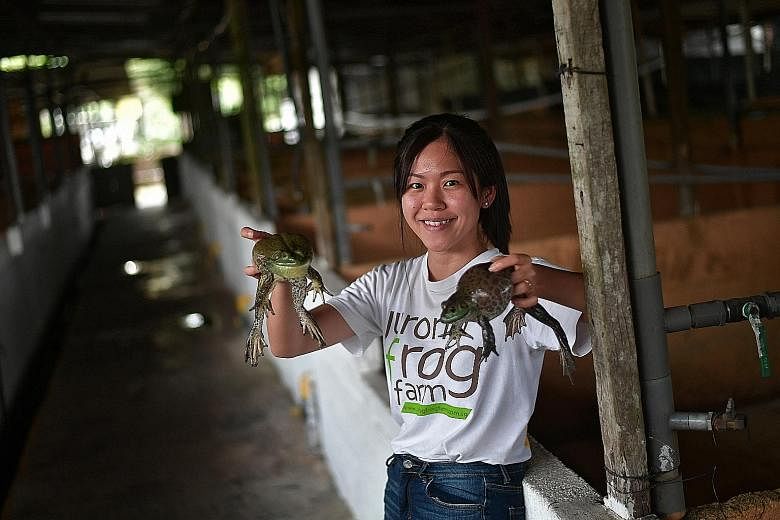"Frog princess" Chelsea Wan, 33, is a second-generation farmer who plans to take big leaps to make farming a sustainable option in Singapore, which dedicates just 1 per cent of its land area to this sector.
No more is Ms Wan content with just selling frog legs. Rather, she is looking to diversify by selling more frog parts, like ovary ducts.
Some may groan at the thought of it, but others are willing to pay up to $105 per tael (50g) for this delicacy, also known as hashima.
Ms Wan, who is director of Jurong Frog Farm, sits on a new industry consultation panel formed by the Agri-Food and Veterinary Authority (AVA) in January to look at improving Singapore's farming sector.
Through focus group discussions involving the panel, AVA has since come up with a Farm Transformation Map to guide changes to the local farming sector.
Yesterday, Minister of State for National Development Koh Poh Koon gave details of the plan during the debate on the ministry's budget.
A key focus is how farms can overcome space constraints. Said Dr Koh: "We need to go upwards into the sky, downwards into the ocean and inwards within our buildings."
There are already farms doing this, he said, citing how fish farm Barramundi Asia is growing seabass in deep underwater net cages just off Pulau Semakau.
Innovation is also important, so food supplies are safeguarded in a climate of erratic weather patterns and natural phenomena that could affect crops.
Dr Koh also said that Singapore needs to build up a generation of "agri-specialists". This could involve polytechnic students doing internships at local farms, or getting institutes of higher learning to collaborate with farmers on research.
AVA will also be making changes to its Agriculture Productivity Fund, which co-funds investments in technology. Currently, farmers have to foot the entire bill first before claiming from AVA later. From next month, the fund will disburse up to 30 per cent of the approved funding quantum upfront.
These initiatives are encouraging, especially for an industry which has long felt it was neglected by the Government, said Ms Wan.
However, farmers need more clarity on the overall vision for agriculture before they can benefit from the new slew of measures, she said.
"Adopting new technology may be daunting, and having to bid for new land every 20 years is an additional risk," she said.
Ms Wan's farm is one of 62 in Lim Chu Kang that will have to move out in 2019 to make way for new defence training grounds. AVA said last year that the first tranche of land sales for farms to relocate "will be launched from early 2017 due to the extensive land preparation works needed at the sites".
Last November, AVA said productivity will be a key consideration in deciding whether to extend a farm's lease.
Ms Wan said she feels productivity is important, but added that the authorities should also consider farmers who add value, as well as the educational and heritage value of farms to Singapore.


